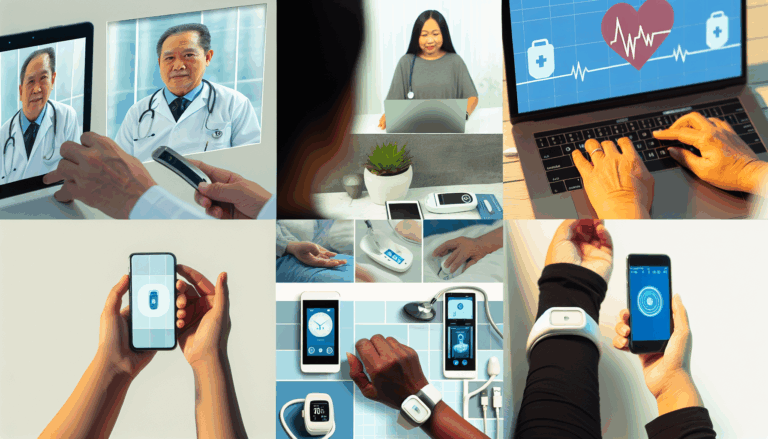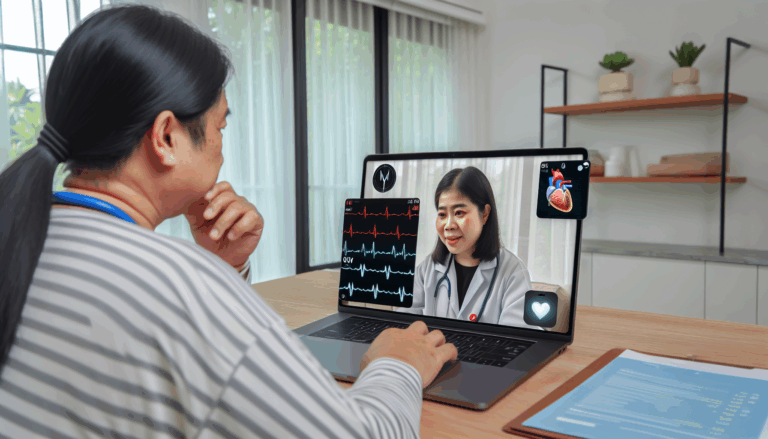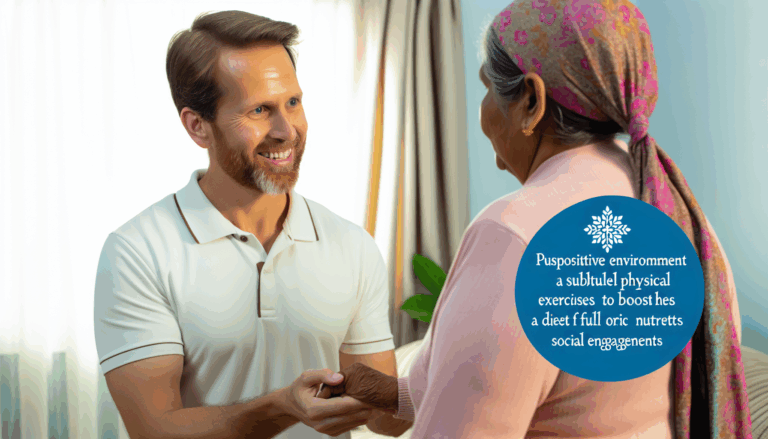In today’s rapidly aging society, the growing needs of seniors requiring constant nursing care present a complex tapestry of challenges that span from physical health management to emotional and psychological support. The traditional model of senior care, heavily reliant on institutionalized facilities or extensive family involvement, has increasingly shown its limitations in addressing these multifaceted demands. This predicament not only places immense pressure on healthcare systems worldwide but also on families striving to ensure their elderly loved ones receive compassionate, effective care without losing their sense of independence and dignity.
Enter the dawn of a new era in senior caregiving—an era where technology emerges as both hero and harbinger of change, promising to reshape the landscape of in-home nursing care fundamentally. As innovative digital solutions dismantle previous barriers to efficient homecare, we stand at the cusp of a revolution poised to empower our elderly population like never before. From remote monitoring devices that offer real-time health insights to telehealth services breaking down geographical constraints, technology is weaving a new paradigm for eldercare—a future wherein quality care reaches every home with an internet connection.
This unparalleled fusion between healthcare and tech beckons us into deeper exploration: How exactly are these technological marvels partaking in this quiet upheaval? What awaits seniors navigating this brave new world enabled by gadgets less familiar than stethoscopes yet equally—if not more—potent in nurturing health? As you delve further into this article, prepare for an enlightening journey through the corridors of innovation where we unveil just how technology is revolutionizing what it means to grow old gracefully—at home.
Empowering Independence: The Impact of Remote Monitoring Devices
Remote monitoring devices, such as wearable health trackers and sensors placed around the home, are not just gadgets; they represent a leap forward in proactive healthcare. By allowing continuous observation of vital signs like heart rate and blood pressure from afar, these devices serve as silent sentinels in the lives of seniors. They offer an unobtrusive way for healthcare providers to keep tabs on their patients’ well-being without compromising on personal space or freedom. This facet of technology brings peace of mind to caregivers and family members, knowing that anomalies in health metrics can be detected swiftly—often before they evolve into more severe problems.
Beyond mere monitoring, the integration of sophisticated algorithms enables these devices to predict potentially life-threatening events such as falls—a leading cause of injury among older adults. Wearable tech equipped with fall detection technology can automatically alert medical personnel and caregivers the moment an incident occurs, vastly reducing emergency response times. In essence, this aspect transforms reactive care methods into proactive safety measures. Moreover, for seniors living alone or those who prize their independence but require some level of surveillance due to health issues, remote monitoring offers an empowering compromise between autonomy and security. Thus, by harnessing data-backed insights from daily activities and physiological measurements, we’re stepping towards a future where senior care is not only about managing ailments but actively enhancing quality of life through technology.
Telehealth Services
Virtual consultations through telehealth services have emerged as a game-changer in the field of senior care. With the help of video conferencing applications, doctors can now assess their patients from a distance, eliminating the need for frequent and often exhausting hospital visits. This remote mode of healthcare delivery has proven particularly beneficial for seniors who may have difficulty traveling or are at risk of complications during transit.
One significant advantage of telehealth services is the ability to conduct regular check-ups and monitor patients’ conditions more closely. Through virtual appointments, physicians can ensure that any potential health issues are detected early on, allowing for timely interventions and preventing unnecessary hospital admissions. By leveraging real-time data obtained through various remote monitoring devices, doctors can closely track vital signs and make informed decisions regarding adjustments to medication dosages or treatment plans.
Furthermore, telemedicine platforms enable seniors to consult specialists without geographical limitations. For individuals residing in rural areas with limited access to specialized healthcare providers, this technology opens doors previously closed due to physical distances. It also allows elderly patients with mobility limitations or chronic illnesses that require continuous follow-up care to receive necessary medical attention conveniently from their own homes.
In summary, virtual consultations offered by telehealth services provide accessibility and convenience while empowering healthcare professionals to deliver high-quality care remotely. By utilizing these innovative technological solutions, both patients and practitioners benefit from enhanced communication channels and improved management of seniors’ overall well-being
Medication Management Apps: Revolutionizing Dosage Control and Adherence
In the digital age, smartphone apps are not just for entertainment or communication; they have become essential tools in managing medication schedules. These innovative apps offer a variety of features specifically designed to help individuals stay on top of their medications. From sending reminders about dosage timings to tracking medication adherence, these apps are transforming how we manage our medications.
One key benefit of medication management apps is the potential for reducing medication errors. With busy lives and multiple prescriptions, it’s easy to forget a dose or mix up medications. However, with the help of these apps, individuals can receive timely reminders that ensure no dose goes missed. Moreover, caregivers can be notified if a dose is skipped, allowing them to intervene and take necessary actions promptly.
Another advantage of medication management apps is improved compliance. By providing clear instructions and offering a visual representation of each pill or tablet along with its dosage details, these apps empower users to take their medications as prescribed. They also provide educational resources about potential drug interactions and side effects for better understanding.
Furthermore, these smart applications contribute significantly to enhancing safety in medication management. Many modern-day apps incorporate features like barcode scanning that enable individuals to verify if they have the correct prescription before taking it – mitigating risks related to mistaken or counterfeit drugs.
Overall, medication management apps represent an exciting technological advancement in healthcare that helps streamline in-home nursing care for seniors by ensuring accurate dosage control and promoting adherence through active engagement with patients’ daily routines.
Assistive Devices for Aging in Place
Innovative assistive devices are transforming the concept of aging in place by providing seniors with the tools they need to maintain their independence and safety within their own homes. One such innovation is smart home technology, which includes voice-activated assistants like Amazon Echo or Google Home. These intelligent devices allow seniors to control various aspects of their living environment simply by using voice commands. From adjusting lighting or temperature settings to playing music or receiving reminders about medication schedules, these technologies give older adults a greater sense of autonomy without compromising on convenience.
Another essential category of assistive devices includes mobility aids and wearable technology that directly support seniors’ daily activities while ensuring their safety. Mobility aids such as walkers or canes have seen significant advancements, incorporating features like built-in seats, brakes, or ergonomic designs to provide stability and reduce strain on joints. Additionally, wearable technology has emerged as an invaluable asset for seniors who wish to stay active while monitoring vital signs or physical activity levels. With the help of fitness trackers and health monitors worn on the wrist or clothing, older adults can keep track of important health metrics and receive alerts regarding potential concerns.
These innovative assistive devices not only enhance the quality of life for aging individuals but also alleviate some burdens placed upon family members and caregivers responsible for providing support. By leveraging technologies that promote independent living and address common challenges faced by elderly individuals, we are able to create a more inclusive society where seniors can age gracefully in their own homes while maintaining their dignity and freedom.
The Impact of Technology at Home”
Summing up the key benefits of incorporating technology into in-home nursing care for seniors, it is evident that these technological advancements have the potential to revolutionize senior care. By enabling remote monitoring and telehealth services, healthcare professionals can keep a close eye on their patients’ health status without physically being present at all times. This not only facilitates early detection of any complications or changes in condition but also allows for timely interventions and preventive measures, reducing hospitalizations and improving overall well-being.
Furthermore, medication management apps play a crucial role in ensuring medication adherence among elderly individuals. With reminders, dosage guidance, and even automated refills, these apps help prevent medication errors and ensure that seniors are taking their medications as prescribed. This level of support promotes better health outcomes and reduces the risk of adverse events due to missed or incorrect doses.
In addition to improved medical care, assistive devices are transforming the way aging individuals maintain their independence at home. From mobility aids like walkers and wheelchairs to fall detection systems and smart home automation technologies, these devices provide an added layer of safety while promoting greater autonomy for seniors. By enhancing accessibility within homes and mitigating common risks associated with aging-related conditions such as falls or cognitive impairment, assistive devices contribute significantly to the overall quality of life experienced by seniors.
In conclusion, integrating technology into in-home nursing care has immense potential to enhance the lives of aging individuals. From remote monitoring to medication management apps and assistive devices – each innovation brings its own advantages – ultimately resulting in improved quality-of-life outcomes for older adults. As we continue to embrace technological advancements in healthcare delivery for seniors, we can look forward to reduced hospitalizations rates, lower healthcare costs through prevention rather than treatment focused interventions ,and overall enhanced well-being throughout their golden years



